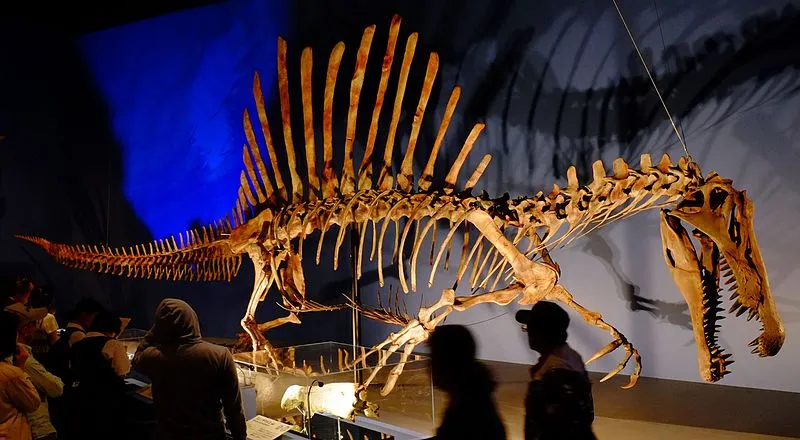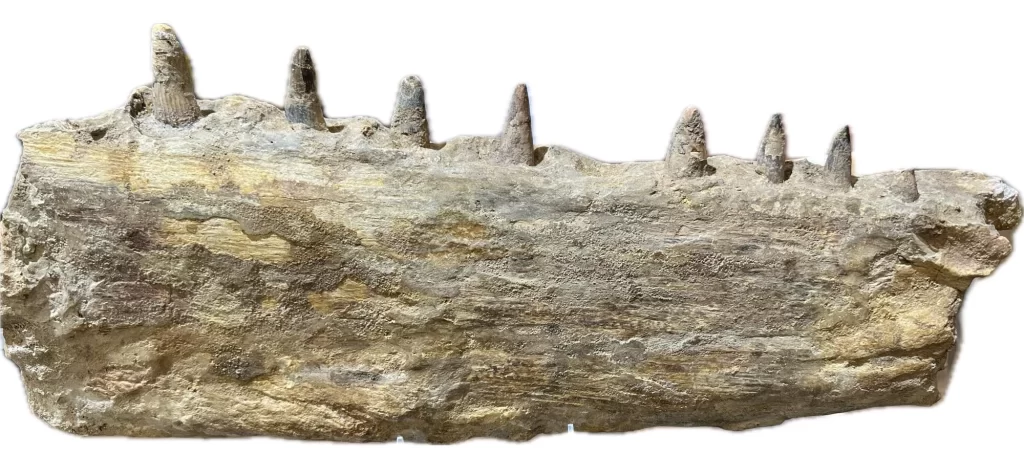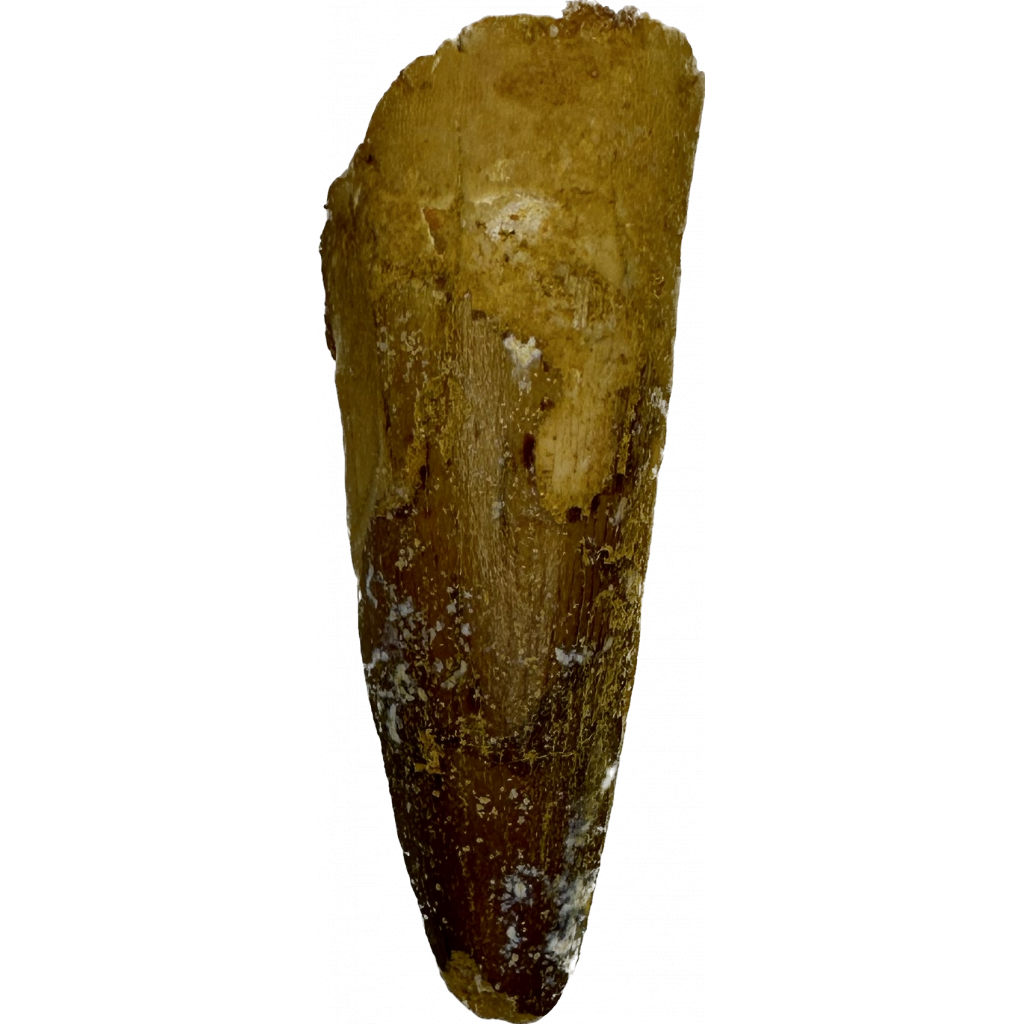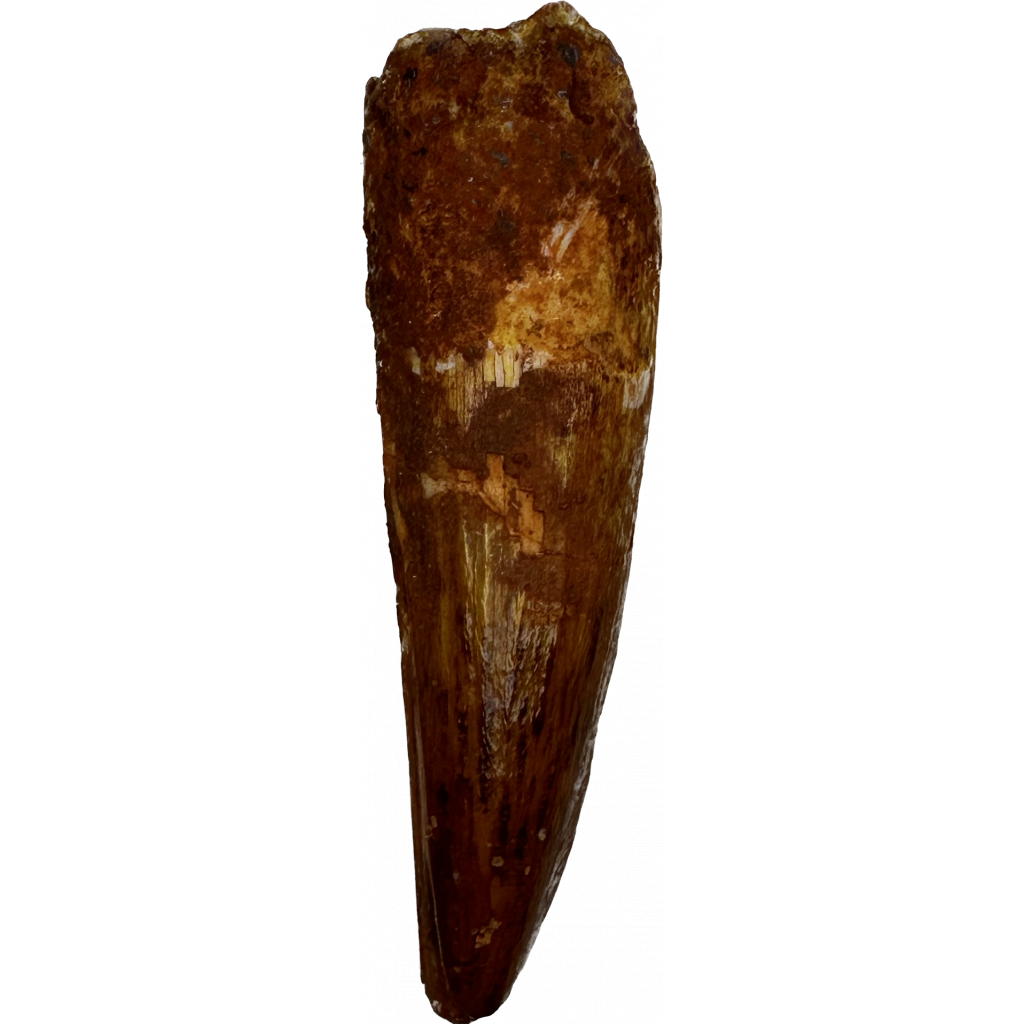Spinosaurus: The Giant of Kem Kem

Spinosaurus, meaning “spine lizard,” is one of the most fascinating dinosaurs that ever roamed the Earth. With its sail-like structure on its back and its elongated jaw, this dinosaur has captured the imagination of paleontologists and dinosaur enthusiasts alike. Spinosaurus is especially renowned for its massive size and unique adaptations, making it a truly remarkable creature from the prehistoric world.
This dinosaur was first discovered in Egypt in 1912 by German paleontologist Ernst Stromer. The first fossils consisted of parts of the dinosaur’s spine, which featured tall, sail-like structures that gave the animal its name. Additional fossils, including skull fragments and limb bones, have been found over the years, helping researchers piece together a clearer picture of this enigmatic dinosaur.
Physical Characteristics
Spinosaurus is known for its distinct sail-like structure on its back, formed by elongated neural spines that could reach over 5 feet (1.5 meters) in height. These spines were likely covered in skin, creating a sail that may have been used for display or thermoregulation. The dinosaur’s elongated jaws were filled with conical teeth, suggesting a diet that included fish and possibly other prey.
Additionally, this species was one of the largest known carnivorous dinosaurs, with estimates of its length ranging from 41 to 59 feet (12.5 to 18 meters). Its size rivaled that of other giant theropods like Tyrannosaurus rex and Giganotosaurus. Despite its size, Spinosaurus had relatively short hind limbs, indicating that it may have been a less efficient walker on land compared to other large theropods.
Habitat and Distribution
Spinosaurus lived in what is now North Africa during the Cretaceous period, approximately 112 to 93 million years ago. Its fossils have been found in the Kem Kem beds, a geological formation that spans across Morocco, Algeria, and Tunisia. The Kem Kem beds are known for their rich fossil deposits, including a variety of dinosaurs and other prehistoric creatures.
It is believed that the Spinosaurus was a semi-aquatic dinosaur, spending much of its time in water. Its elongated jaws and conical teeth were well-suited for catching fish, suggesting that it was primarily a piscivore. The dinosaur’s sail may have helped it navigate through water or regulate its body temperature, much like the sails of modern sailfish.

Controversies and Ongoing Research
The study of Spinosaurus has been surrounded by controversy and debate, particularly regarding its lifestyle and adaptations. Some researchers argue that it was primarily a terrestrial predator, while others propose that it was more adapted to an aquatic lifestyle. Ongoing research and new fossil discoveries continue to shed light on the true nature of this remarkable dinosaur.
Evolutionary History
Spinosaurus belongs to a group of dinosaurs known as theropods, which includes other carnivorous dinosaurs like Tyrannosaurus rex and Velociraptor. However, Spinosaurus is unique among theropods due to its specialized adaptations for an aquatic lifestyle. These adaptations set it apart from its terrestrial relatives and provide valuable insights into the diversity of dinosaurian ecosystems.
During the Cretaceous period, the Kem Kem region was a vast river system with a diverse array of flora and fauna. The presence of Spinosaurus alongside other predators like Carcharodontosaurus and Sarcosuchus suggests a complex ecosystem with a variety of niches. The abundance of aquatic prey indicates that Spinosaurus was well-suited to exploit the resources of this ancient river system.
Feeding Behavior
The elongated jaws and conical teeth of Spinosaurus indicate a specialization for catching fish. Its skull morphology is reminiscent of modern crocodilians, suggesting that it may have employed similar hunting strategies. Spinosaurus likely used its long snout to snap up fish near the water’s surface, utilizing its sharp teeth to secure its prey.

Locomotion
Despite its large size, Spinosaurus was likely a proficient swimmer. Its relatively short hind limbs and elongated body are characteristic of animals adapted to an aquatic lifestyle. It may have used its powerful tail to propel itself through the water, much like modern crocodiles. However, its exact swimming abilities are still a subject of ongoing research and debate.
Social Behavior
The social behavior of Spinosaurus is still poorly understood. It is possible that these dinosaurs were solitary hunters, like many large predators today. However, given the complexity of their environment and the presence of other large predators, it is also possible that they exhibited some form of social behavior, such as cooperative hunting or territoriality.
Extinction
Like all non-avian dinosaurs, Spinosaurus went extinct at the end of the Cretaceous period, approximately 66 million years ago. The exact cause of their extinction is still debated, but it is likely that a combination of factors, including environmental changes and possibly asteroid impact, led to their demise. Despite their extinction, the legacy of Spinosaurus lives on in the form of fossil remains that continue to fascinate and inspire scientists and enthusiasts alike.


